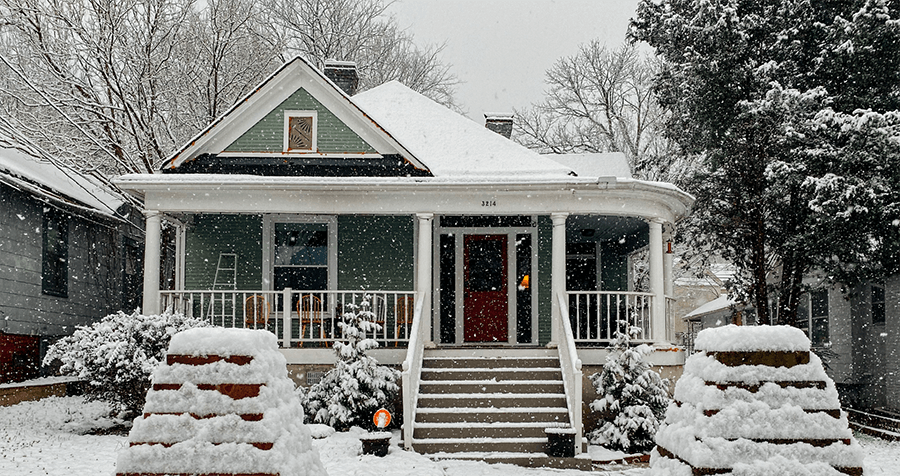Winter is here, bringing with it snow, wind, ice, and other threats to your roof. Here are 6 tips to help your roof survive this winter.
1. Ice Dam Prevention
Ice dams are one of the biggest threats your roof will face during the winter. These occur when snow begins to melt as it warms, then refreezes into a top layer of ice when temperatures drop. This creates a barrier which traps snow and water beneath its icy surface. Eventually, this trapped moisture will penetrate your roof and drain into your home. Ice dam prevention involves snow removal from the roof, and stopping dam formation before it starts.
2. Ice Dam Mitigation
If your roof already has an ice dam, you can take steps to break it up and allow normal water flow. Don’t ever get on your slippery roof, and never use hammers or chisels to break up ice dams! Here are a few safer methods:
- Fill panty hose with ice melt and lay it across the dams from roof point to gutter, allowing the tubes to overhang your gutters. This will melt snow and ice and create a clear path for water runoff.
- Refreeze the trapped water by directing cold air, such as created by a big fan, at the roof from inside your attic or crawl space.
- Plug in snow melting mats or cables to keep the ice and snow moving by warming roofing surfaces from the outside, melting the icy surface and releasing trapped moisture. Having these in place prior to icy conditions will keep the dams from forming.
3. Snow Roof Rake
Snow weighs over 20 pounds per cubic foot. That’s a lot of weight to ask your roof to support! Snow roof rakes are designed to remove snow from the roof. Featuring long poles and wide heads, some of these even have wheels on the rake head to make them easier to maneuver. They are lightweight and durable, extending to 20’ or more for a better reach. Proper snow removal from roof surfaces is one of the best ice dam prevention methods and will lessen the weight burden on your roof.
4. Trim Overhanging Tree Branches
If you didn’t do this already when readying your roof for fall, it’s not too late. Tree branches become brittle with heavy snow and ice, and are more likely to break off and cause damage to your roof and gutters, especially in windy conditions.
5. Clean Gutter Debris
Debris in your gutters will stop them from draining properly, resulting in a build up of ice and snow. While icicles on gutters may look pretty, collapsed or damaged gutters are costly to replace and can cause significant damage to your roof and your siding.
6. Fix Roof Issues Now
Missing shingles, uneven roof surfaces, sagging sections of the roof, and water spots on your ceilings all indicate major issues with your roof that need to be addressed immediately. Professional roofing contractors are trained to spot potential problems and repair them before they cause significant damage to your home.
Contact PJ’s Roofing, servicing homes in Frederick and the surrounding area, for a winter roof inspection to make sure your roof will survive winter’s icy grip.













